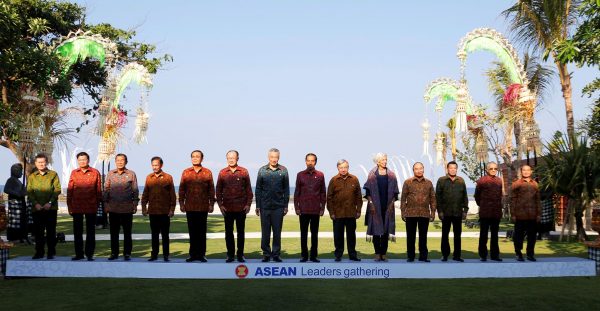And in India, pressure is also building up against its currency, which has slipped to a record low.
Will these trends spark a currency contagion in emerging markets? ASEAN was spared full-blown impact in the 2007–08 global financial crisis. But can it remain immune next time around?
On the one hand, ASEAN is seen as a region of economic opportunity and attracts substantial capital inflows. Average GDP growth in ASEAN has been above 5 per cent for the last few years and the IMF and World Bank predict that this growth will continue into 2019 and 2020.
On the other hand, borrowing by governments and corporate entities on Wall Street reached US$6.8 trillion in 2017. Global total debt hit US$247 trillion in the first quarter of 2018. These are unprecedented numbers and the associated risks are high.
An important financial barometer is the Damocles Index. The Index has called to attention the risk of exchange rate crises for Argentina, Egypt, Pakistan, South Africa, Sri Lanka, Turkey and Ukraine. Apart from South Africa, the other six countries are already in or facing a currency crisis and seeking assistance from the IMF.
ASEAN member states are not facing immediate risk of an exchange rate crisis according to the Index. That being said, the Indonesian rupiah has fallen to its lowest level in more than 20 years and Indonesia’s external debt currently stands at 34 per cent of GDP — one of the highest in Asia. Indonesia is also handling the effects of a number of natural disasters and growing political pressure from different interest groups, particularly on issues relating to concessions for investors in the oil, gas and mining sectors. These factors are contributing to weakening investment sentiment, which may in turn exacerbate unfavourable perceptions of the rupiah.
Malaysia and Singapore are also facing financial challenges. Some of these are associated with funds leaving emerging economies, including ASEAN members, as quantitative easing policies are reversed in developed economies and interest rates are increased. Other issues are emerging due to the worsening US–China trade friction, which is adversely affecting market sentiment in these two highly trade-dependent economies.
In this global economic climate, it is possible that certain ASEAN member states — or ASEAN as a whole — might face the danger of a ‘stroke’ in exchange rates. A stroke cuts off blood flow to the brain and can happen to anyone at any time.
ASEAN economies should watch out for any symptoms and take preventive actions to address a possible ‘currency crisis stroke’. There is a critical time window in which to address ailing economies. Once past, a meltdown is inevitable. A currency crisis stroke is also highly contagious, as seen during the 1997 Asian financial crisis and the 2007–2008 global financial crisis.
Since the 1997 crisis, there have been two distinct developments in Southeast Asia. First, ASEAN has deepened economic integration among its member states and with key trading partners, particularly China. Second, the global and regional socio-political landscapes have transformed. Security and trade challenges have increased, especially because of extremism and unilateral moves motivated by nativism, nationalism and religion.
The so-called Islamic State may be defeated in the Middle East but its foreign fighters are returning home, including many to Southeast Asia. A currency crisis or other economic grievances may well drive disaffected populations to support the returning extremists or other radicalised elements in the respective societies. Poor socio-economic conditions could also fertilise discontent against incumbent governments.
At the same time, ASEAN economies stand to be increasingly affected by a prolonged US–China trade dispute due to their strongly inter-connected production, supply and value chains. This could spell trouble for those with weaker currencies, triggering possible crises and global contagion.
If ASEAN and its key trading partners in the Regional Comprehensive Economic Partnership (RCEP) don’t take timely and substantive measures to pre-empt the consequences of weakening currencies, a potentially disastrous economic downturn in the region is not out of the question.
A coordinated multilateral approach to avoiding a future currency crisis would work well with ASEAN’s current efforts to open regional markets through RCEP, boost trade and increase financial stability.
Christopher H Lim is a Senior Fellow and Tan Ming Hui is an Associate Research Fellow in the Office of the Executive Deputy Chairman, S Rajaratnam School of International Studies (RSIS), Nanyang Technological University, Singapore.
A version of this article originally appeared here on RSIS.

